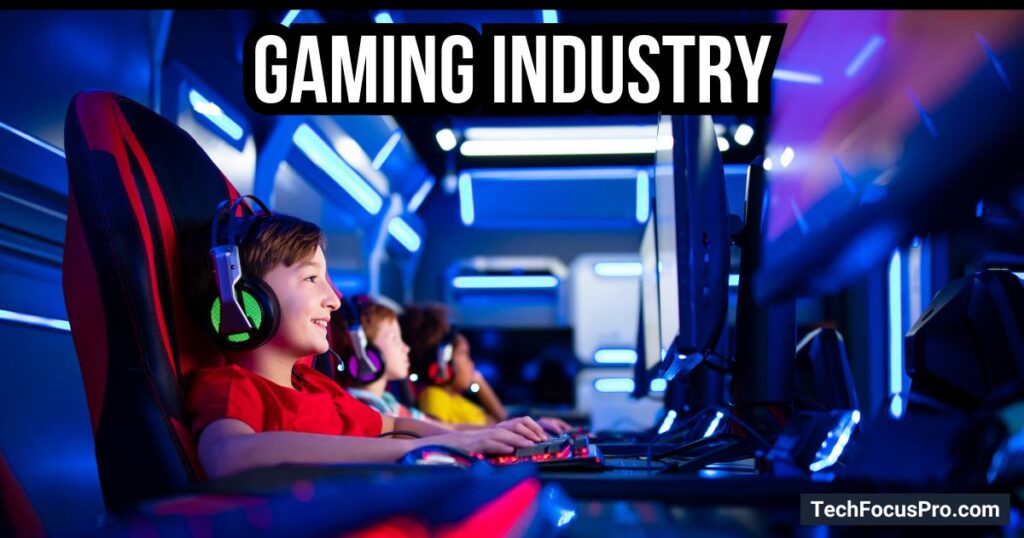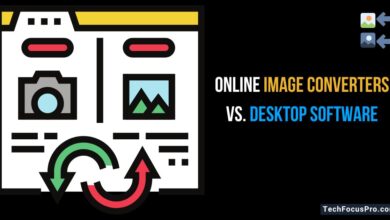4 Industries Impacted by Advancements In Wearable Technology

A special tech class is usually worn on the body and has been around for some time. Its history goes back many decades. We saw the first digital watch in the 1970s, but technology has become much better. Now, new and better wearable devices are everywhere, becoming a very important part of life for many people. Smartwatches, fitness trackers, and bright clothing are changing many industries.
Many companies use them to creatively solve certain problems and deliver customers more efficient goods and services. This has led to greater demand for first-rate wearable devices, continuously expanding the market. Present projections expect the market to reach $265.4 billion by 2026, over double the figure of 2021.
The four industries highlighted below have benefited significantly from wearable tech.
Gaming Industry

Game developers save time by adopting new technology. Everyone knows the goal is to create games that fully immerse players, which is only possible with better technology. AR and VR technologies have given them an unparalleled opportunity to do this. With these, game developers can transport players into entirely new worlds.
AR and VR games come with wearable devices that allow players to interact with the games in ways that were not possible before. Devices like smart glasses or phone-based systems blend digital elements into the real world. This especially takes things to a new level in survival games. This new tech makes some of the top survival games even more engaging by encouraging players themselves, not just their game characters, to move about and explore their environments.
Smartwatches are another valuable wearable device in gaming. They can provide additional information about people’s games, making the experience more interactive and engaging. For example, they can display game statistics and notifications, allowing players to control parts of the game without primary gaming devices.
The global gaming market size is continuing to grow, and is expected to reach USD 545.98 billion by 2028
According to ScienceDirect
Fitness Industry
Wearable tech has changed the fitness industry. Fitness trackers and smartwatches have become common devices worldwide (about 225 million people use smartwatches).

These devices help people monitor their physical activity and track their workouts, things that were impossible before.
Who would have thought tracking your real-time heart rate, how many steps you take per day, how many calories you burn, and so on, could one day become possible? Well, no they are, thanks to wearable devices and their use of microtechnology. This gives users knowledge and control of their bodies, empowering them to make more informed decisions about their health and fitness. With this data, you can set realistic health goals.
Many wearable fitness devices offer personalized coaching for people who need it. They help users stay on track with their fitness goals and give real-time feedback during workouts.
The Healthcare Industry

The healthcare industry deals with people’s lives, so efficiency is crucial. This is why wearable tech is important here.
Devices like blood pressure monitors give continuous readings. This means healthcare providers can now closely monitor their patients and get notified of potential complications. These devices can track symptoms and even administer medication when necessary.
Wearable technology also advances medical research, as accurate user data can be easily collected from these devices and analyzed to give researchers important insights. These insights can help them better understand certain diseases, thus improving healthcare policies.
Logistics Industry
The logistics industry faces a number of challenges that wearable devices have been able to address. For example, one of the most significant challenges logistics companies face is in warehouse operations.

These companies usually have a lot of goods that need to be organized appropriately to prevent confusion. More than that, there needs to be accurate data entry to keep track of all the goods in store.
Wearable exoskeletons can help lift and move heavy objects within the warehouse, while glasses can help manage inventory by giving real-time information about item locations and order details. Voice-activated wearables can help record data quickly and correctly.
Also, there’s the concern about delivery routes. To ensure that the goods get to the customers as fast as possible, take the best routes when delivering an order. Wearable devices like smartwatches can give real-time route information and help find the fastest route from one location to another.
Now you are familiar with 4 Industries Impacted by Advancements In Wearable Technology. Also take a look at Advanced Protection Technologies: Best Guide 2024
FAQs
What are wearable technologies?
Wearable technologies refer to electronic devices comfortably worn on the body. They often incorporate innovative technology to monitor or enhance various aspects of daily life, such as health, fitness, communication, and entertainment.
How do wearable devices impact health monitoring?
Wearable devices provide real-time data on various health metrics, such as heart rate, activity levels, and sleep patterns. This data lets users track their health and fitness progress and helps healthcare providers monitor patients outside traditional clinical settings.
Are wearable devices suitable for all ages?
Wearable devices are designed for many users, from children to seniors. Many devices come with customizable features, making them suitable for various needs and preferences across different age groups.
What industries benefit most from wearable technology?
Several industries benefit from wearable technology, including gaming, fitness, healthcare, and logistics. Each leverages these devices to improve efficiency and engagement and to provide innovative solutions to everyday challenges.
What can we expect from the future of wearable technology?
The future of wearable technology promises even more advanced functionalities, with potential advancements in artificial intelligence, integration with smart home systems, and greater focus on user-friendly designs, ultimately enhancing everyday experiences across various sectors.
Conclusion:
As we can see, wearable technology gives many industries creative ways to solve daily problems. That’s why it has left such an impact on many industries. Things not imaginable before (like knowing how often you turn in bed at night, for example) are now possible. Thanks to this technological advancement, how we live our lives is different now.






